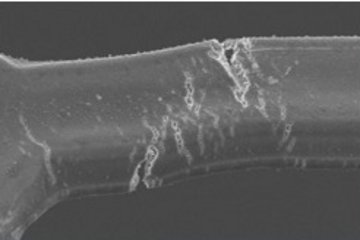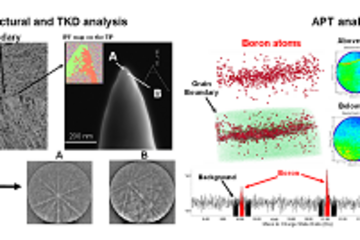All genres
1921.
Talk
Linking localized plastic deformation to grain boundary damage nucleation in single phase metals. EUROMAT 2007, Nürnberg, Germany (2007)
1922.
Talk
Application of a Phenomenological Approach to Mechanical Twinning in Crystal Plasticity Finite Element Modelling of High-Mn Steel. EUROMAT 2007, Nürnberg, Germany (2007)
1923.
Talk
Modeling of the Mechanical Behavior of Bone at Submicron Scale through Mean-Field Homogenization. European Congress and Exhibition on Advanced Materials and Processes (EUROMAT 2007), Nürnberg, Germany (2007)
1924.
Talk
Theory-guided design of Ti-based binaries for human implants. Euromat 2007, Nürnberg, Germany (2007)
1925.
Talk
Point and layer defects in transition-metal based Laves phases. EUROMAT 2007, Nürnberg, Germany (2007)
1926.
Talk
Phase equilibria in the Nb–Cr–Al system at 1150, 1300 and 1450 °C. Workshop "The Nature of Laves Phases IX", Stuttgart, Germany (2007)
1927.
Talk
Crystal mechanics of metals and biomaterials at small and at large scales. Seminat Talk at Ecole Centrale, Paris, France (2007)
1928.
Talk
Nanomechanics of thin glassy polystyrene films. 1st IMPRS-SurMat Workshop on Surface and Interface Engineering in Advanced Materials, Klosterhost, Germany (2007)
1929.
Talk
3D-orientation microscopy in a FIB SEM: A new dimension of microstructure characterisation. M&M 2007, Microscopy and Microanalysis 2007 Meeting, Ft. Lauderdale, FL, USA (2007)
1930.
Talk
Theory-guided design of Ti-binaries for human implants. XVI. International Materials Research Congress, Cancun (Merrida), Mexico (2007)
1931.
Talk
3D studies on orientation patterning below nanoindents in Cu single crystals using 3D EBSD and crystal plasticity finite element simulations. 3rd Intern. Indentation Workshop, Cavendish Lab., Cambridge, UK (2007)
1932.
Talk
Nanomechanics of thin glassy polymer films. 3rd International Indentation Workshop, Cavendish Laboratory, University of Cambridge, UK (2007)
1933.
Talk
A texture component model for predicting recrystallization textures. The Third International Conference on Recrystallization and Grain Growth, Jeju Island, South Korea (2007)
1934.
Talk
3D Orientation microscopy. 1st Annual EDAX EBSD German User's Group Meeting, Wiesbaden, Germany (2007)
1935.
Talk
Ab initio prediction of elastic and thermodynamic properties of metals. Seminar in Friedrich-Alexander-Universitaet, Erlangen-Nürnberg, Germany (2007)
1936.
Talk
Multiscale crystal mechanics at small and at large scales. Seminar talk at Imperial Collegues, London, UK (2007)
1937.
Talk
Theory-guided design of Ti-based binaries for human implants. Spring meeting of the German Physical Society (DPG), Regensburg, Germany (2007)
1938.
Talk
Influence of structural principles on the mechanics and efficiency of different biological materials using lobster cuticle as a model material. DPG Spring Meeting, Regensburg, Germany (2007)
1939.
Talk
Overview on 3D EBSD. Deutsche Gesellschaft für Materialkunde e.V., Fachausschuss Texturen, RWTH Aachen, Germany (2007)
1940.
Talk
3D Orientation microscopy. Deutsche Gesellschaft für Materialkunde e.V. Fachausschuss Texturen, RWTH Aachen, Germany (2007)











